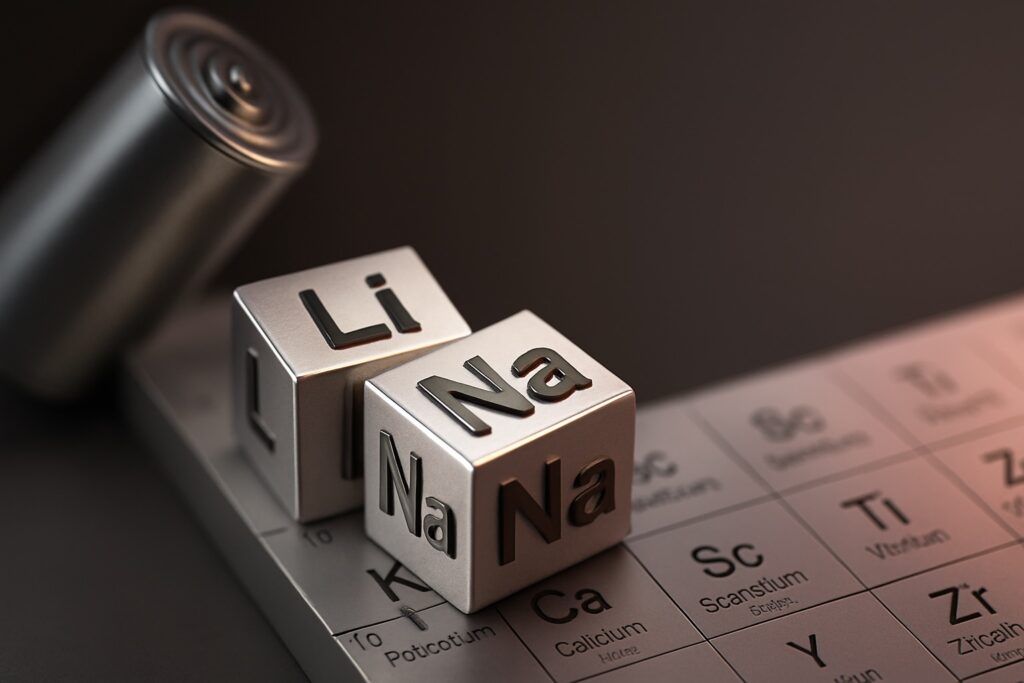
As clean energy adoption accelerates, the world needs battery technologies that are cheaper, safer and more scalable. While lithium-ion remains the dominant chemistry, sodium-ion batteries are gaining serious momentum, especially in grid-scale and stationary Battery Energy Storage Systems (BESS).
At ESS Ltd, we believe sodium-ion is shaping up to be one of the most exciting developments in the future of energy storage.
What Are Sodium-Ion Batteries?
Sodium-ion batteries work like lithium-ion batteries but substitute lithium with sodium. Sodium is an element that is abundant, affordable and globally available. Though they currently have lower energy density than lithium-ion, sodium-ion batteries are ideal for large-scale, long-duration applications, where safety, cost, and longevity are more important than compact size.
What are the advantages of Sodium-Ion?
- No rare metals like lithium or cobalt
- Lower environmental impact
- Better safety profile (non-flammable electrolytes)
- Stable supply chains (sodium from salt or seawater)
Who’s Developing Sodium-Ion Technology?
1. CATL (China) – Leads the commercial race
- Key Milestone: Launched first-generation sodium-ion cells in 2021
- Use Case: Initially targeting EVs and grid storage; aiming for commercial scaling by 2025
- Hybrid system: Developing packs that combine sodium-ion with lithium-ion for optimised performance
2. Natron Energy (USA) – Focused on Industrial BESS
- Backed by: Chevron, ABB, and Vantage Data Centers
- Factory: 24 GWh facility under construction in North Carolina
- Chemistry: Uses prussian blue electrodes, offering long cycle life and fast charging
- Applications: Industrial backup, data centers, grid services
3. Tiamat (France) – European R&D Pioneer
- Spinout from CNRS (French National Centre for Scientific Research)
- Focus: Fast-charging sodium-ion cells for power tools, mobility, and stationary storage
- Pilot Line: Operational since 2022, with plans to scale by 2026
4. Faradion (UK) – Acquired by Reliance Industries
- Tech: High energy density sodium-ion cells suitable for BESS and mobility
- Goal: Set up large-scale manufacturing in India through Reliance’s infrastructure
- Advantage: One of the first to commercialise sodium-ion cells for real-world deployment
5. Altris (Sweden) – Clean Chemistry Approach
- Chemistry: Patented sodium-based cathodes using iron and manganese
- Mission: Safe, low-cost batteries with fully non-toxic and abundant materials
- Focus: Stationary grid storage and heavy transport
6. HiNa Battery (China) – Academic to Industry Transition
- Founded by: Team from the Chinese Academy of Sciences
- Use Case: Demonstrated electric buses powered by sodium-ion batteries
- Production: Small-scale commercial cells already available
How does it compare to Li-ion?
| Feature | Sodium-Ion | Lithium-Ion |
| Raw Materials | Abundant, low-cost | Scarce, expensive |
| Energy Density | Lower | Higher |
| Cost (future) | ~20–30% less | Higher, volatile |
| Cycle Life | Competitive | Mature |
| Thermal Safety | Higher | Medium |
| Best Use | Grid storage, industrial BESS | EVs, mobile devices |
The future of sodium-ion in BESS
While sodium-ion may not immediately replace lithium-ion in every application, it’s emerging as the top candidate for grid-scale storage thanks to its cost-effectiveness, durability, and sustainability.
As production scales and energy density improves, expect to see sodium-ion BESS deployed in:
- Utility-scale renewable integration (solar/wind farms)
- Industrial microgrids
- Smart cities
- Telecom and data center backup
What This Means for Energy Projects
At ESS Ltd, we’re keeping a close eye on sodium-ion’s evolution. We’re already exploring partnerships and pilot programs that can help bring this promising technology to our urban and industrial clients.
Sodium-ion is not just a lithium alternative, it’s a strategic solution for energy independence, cost control and sustainable growth.